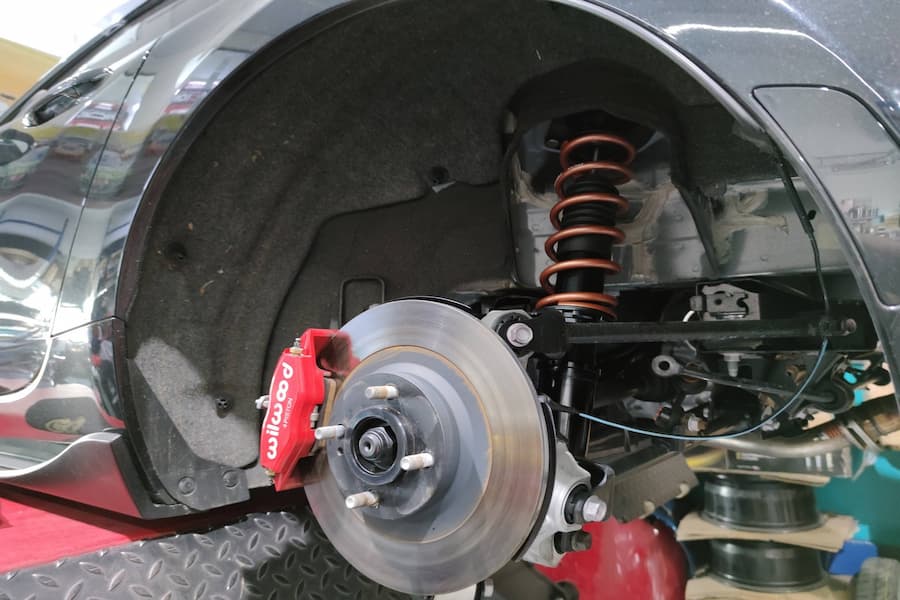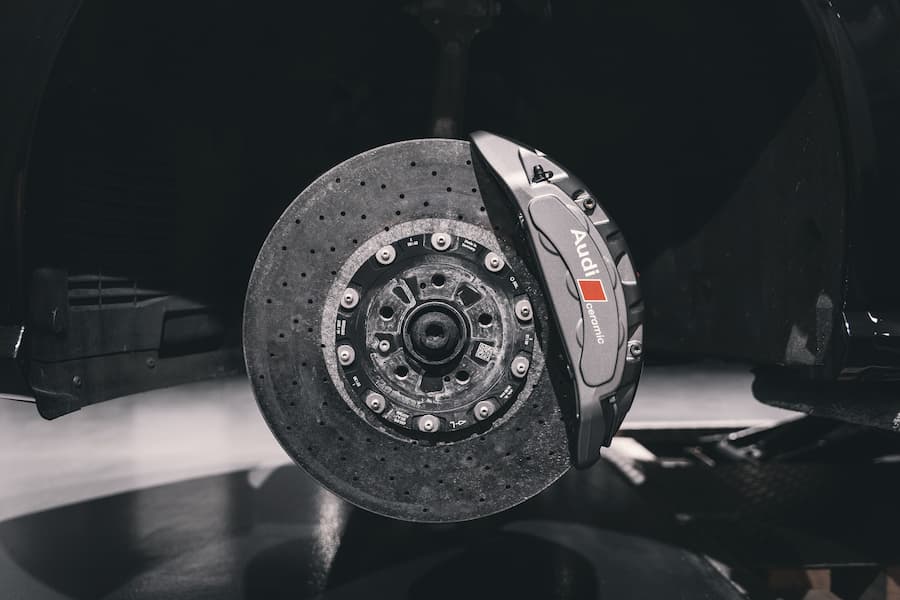As an Amazon Associate we earn from qualifying purchases.
Have you ever kept track of how many times you slam on the brakes to stop or slow down your automobile when driving even a short distance? Probably not. Do you know what the average lifetime of brake rotors is and how you can extend its life? No?! Then, let’s find it out below.
What Is the Average Lifetime of Brake Rotors?
Do you know? Most people use their car brakes up to 20-50 times for a short visit to a grocery store. Consider how hard the brakes work during rush hour or on extended car trips. With each push of the brake pedal, a lot of wear and tear accumulates.
Brake rotors are a crucial part of your vehicle’s braking system and should be replaced regularly. Please continue reading to find out how long brake rotors survive and some warning indications to replace them.

What Do You Mean by Brake Rotors, and How Do They Work?
Disc brakes or drum brakes are the two types of braking systems available for your car.
The improved ability of disc brakes to absorb and distribute heat is one of the reasons for their popularity. Friction is created when the brake pads press against the rotors, and friction generates heat.
All of that friction and energy wear down the brake system over time, reducing the braking ability of rotors.
What Is the Average Brake Rotors Lifetime?
When it comes to brake rotors, how long do they last? It is debatable. The lifespan of your brakes is affected by several things, including the size of your vehicle, your driving style, and the quality of your brakes.
Brake rotors typically last between 30,000 and 70,000 kilometers. However, you should have your automobile inspected by a certified mechanic regularly, and you should pay more attention to your car to know when you would need a brake service.
Resurface The Rotors To Add Extra Years To Its Life-Cycle
You can extend the life of your current set of rotors by resurfacing rather than replacing them, depending on their condition.
The process of resurfacing rotors, also known as “turning” or “machining,” entails grinding the metal disc until it gets uniform and smooth.
Remember, only rotors that have gone under minor abrasion can be resurfaced.
You cannot resurface damaged rotors since they would have corroded, grooved, eroded, or might have cracks. In this case, you will have to buy new ones.
One should also know that resurfacing a rotor is a cheap alternative but a temporary fix. Thus, sooner or later, the equipment can fall out of service. Therefore, before you decide, be honest about the state of your rotors and seek advice from a reputable mechanic.

How to Save Rotors From Abrasion
Your brake rotors will ultimately wear out and have to be replaced one day, no matter what you do. However, you can employ the following tips to increase the life of the rotors.
1. Style Of Driving
Your driving style has a significant impact on how quickly your rotors wear out. Your rotors will be overworked if you ride the brakes and make frequent harsh stops. Put, being courteous on the road equates to being generous to your brakes.
Follow these ways to save your rotors from abrasion.
• Stick to the speed limit
• Coast the vehicle whenever possible.
• It is advised to use a single foot on the pedals.
Drive Effectively
The stop-and-go traffic can strain the brakes of your vehicle. If this is the case, your brakes will wear out more quickly than if you usually drive on a wide-open highway. When feasible, coast to decrease the impact of repeated braking on your brakes.
Driving on winding or mountainous roads wears out your brakes faster than driving on level, straight roads. When going downhill, you can employ engine braking to avoid overheating or damaging your brakes.
In addition, the heavier your car is, the harder it is for your brakes to stop. Avoid overloading your vehicle and wearing out your brakes prematurely.

2. Focus On Maintenance Of Tires
Good brakes and tires are inextricably linked.
You might know that the brakes and tires work on each others’ sidelines to make your car stop. Therefore, if one is in bad condition, it will affect the other.
Tires that have a low tread depth value – 4/32″ will take more time to stop due to lack of fraction between their surface and the road.
This makes your brakes work harder for a more extended period.
Follow the manufacturers’ guidelines on how to maintain the tires. Check the tread value of your tires from time and time, ensure that the value doesn’t dip below 4/32″.
3. Change The Brake Pads
Brake pads are used to slow down the speed of the car. They are installed in the braking mechanism of your vehicle and help in controlling the pace, especially in accident-prone areas.
You should replace brake pads after 30,000–70,000 miles as they wear down over time.
Your rotors will be damaged if you allow your brake pads wear down too much. The brake pads’ metal base rubbing on the rotor destroys the rotor and brake caliper, resulting in hundreds of dollars in unnecessary repairs.
To avoid any mishappenings, we highly advise you to change the rotors and brake pads simultaneously.
Here is a detailed video on how brakes and rotors work.
Conclusion
With advancements in material science and engineering, braking systems have become more effective throughout time. Demand for brake systems in diverse applications led to brake discs and pads in various shapes and materials.
In today’s high-performance rotors, carbon fiber reinforced silicon carbide brake discs are commonly employed which are highly durable.

